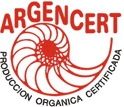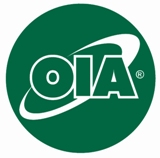The EU Commission’s health and consumers department caves in to farmers and industry lobby request to allow the spread of highly dangerous pest
On explicit request of the dominant farmers unions and the pesticide industry, the department taking care of health and consumers issues within the European Commission (DG SANCO) has proposed(1) to dismantle the European safety system by removing the obligation on countries and farmers to contain the spread of a highly destructive maize pest ? Diabrotica virgifera virgifera Le Conte (the Western corn rootworm – from now on cited as WCR) (2). This move is likely to lead to a massive increase in pesticide use unless the simple agronomic practice of crop rotation is implemented as a countermeasure.
The WCR is a pest of maize that has been accidentally introduced into Europe and is now spreading across the
continent. Its soil?dwelling larvae damage the maize roots and if unchecked can lead to significant yield losses.
However, if adequate agricultural practices, such as crop rotation(3), are put in place the pest can be controlled. Since
2003 the EU has had in place a plant health protection system that requires Member States and farmers to control the pest. On request of the dominant farmers unions, maize growers associations and certain Member States’ governments(4), DG SANCO has now proposed the dismantling of this system, allowing Member States and farmers to deal with the problem as they see fit. The removal of this obligation is likely to result in an even faster spread of the pest, which might lead farmers to increase the use of pesticides significantly.
“It is utterly cynical for dominant farmers unions to be promoting the spread of a pest in order to promote the business interests of the pesticide industry, rather than defend the long term interest of the farmers they are supposed to represent” says François Veillerette, president of PAN Europe.
Maize, mainly used for animal feed, covers about 14 million hectares in the EU. On average, around 22% of maize
cultivation in the EU is on monoculture (without crop rotation). Maize is one of the most intensively grown crops and is widely linked to a range of environmental problems(5) ranging from biodiversity loss to overconsumption and pollution of water to heavy pesticide use. The chemical control of the corn rootworm is based on soil insecticides such as those used in seed treatment (which is known to be toxic to bees) and aerial spraying with broad spectrum
insecticides such as pyrethroids and organophosphates (which kills flying insects, contaminates surface water and
soils far away from the application).
“In order to control the newly established WCR without negative environmental impact, the EU should strongly back farmers moving toward sustainable farming, giving many other positive effects. The WCR can be easily brought under control by the simple use of crop rotation which can be implemented with different solutions according the agronomic and socio?economic conditions. Research on the best rotation solutions in the Member States should be immediately
promoted along with the dissemination of the results” says Dr. Lorenzo Furlan, Veneto Agricoltura, Italy.
Crop rotation has proven a good agricultural practice in traditional, conventional and organic agriculture for its
feasibility and multiple beneficial effects (e.g. more efficient nutrient use over the years, better soil structures and better pest management).
We (6) believe that a meaningful response to the WCR pest crisis has to be based on the following combination of actions:
• Maintain the obligation on Member States and individual farmers to take appropriate action wherever the
pest is present or likely to be spreading;
• Introduce mandatory crop rotation as part of the “greening component” of the Common Agricultural Policy
(CAP) post 2013(7);
• Swiftly and correctly implement the Sustainable Use of Pesticides Directive which requires an obligatory
move toward Integrated Pest Management(8);
• Use the newly proposed European Innovation Partnership to promote research, experimentation and uptake of biological control measures and of risk prevention through appropriate agronomic practices(9).
? ENDS ?
Notes to the editor:
(1) DG SANCO has recently sent a proposal to other directorate generals within the Commission “repealing Decision 2003/766/EC on emergency measures to prevent the spread within the Community of Diabrotica virgifera Le Conte”, and of “Recommendation 2006/565/EC on containment programmes to limit the spread of Diabrotica virgifera Le Conte in Community areas where its presence is confirmed”.
(2) Corn rootworms are among the most economically destructive insects affecting maize. If left untreated, corn rootworm larvae can destroy significant percentages of maize. In the United States and Canada, Diabotrica causes $1.000 million in lost revenue every year, through yield loss and loss of treatments.
WCR was unknown in European countries until the late 1990s. It was forbidden even in laboratories because of the difficulty in eliminating it with known chemical insecticides in case of escape. It appears to have entered Europe from the United States in large numbers during the Yugoslav wars. It is especially widespread around airports and it is therefore believed that US planes were likely to have carried this pest. It has since spread primarily in Hungary, Slovakia, Slovenia, Romania, Bulgaria, Czech Republic and into large parts of Italy, Poland and Austria.
(3) See more information here: Bertossa, M.1, Schaub, L.2, Colombi, L.3, Die gute alte Fruchtfolge als
Bekämpfungsmethode gegen den Maiswurzelbohrer (Diabrotica virgifera virgifera LeConte), Band 1, 10th issue of Wissenschaftstagung Ökologischer Landbau, (orgprints.org/14414/1/Bertossa_14414.pdf)
(4)In a leak of the commission’s decision, one can read: whereas: “(6) Some Member States and Union farmer’s and maize grower’s associations have expressed their dissatisfaction with the present regulatory framework against this organism, requesting that the current rules be repealed, in the light of the ongoing spread of the pest in the past years into new regions of the Union.”
(5) A short overview of some of the environmental and health impacts of pesticides can be found here:
http://www.pan?europe.info/Campaigns/pesticides/documents/pesticides%20and%20health,%20overview.doc
http://www.paneurope.
info/Campaigns/pesticides/documents/risk_assesment/Pesticides%20and%20environment,%20an%20overview.doc
(6)This press release is issued by:
ARC
ARC2020 is a multi?stakeholder platform of over 150 organisations across the EU pushing for a profound reform of
the EU’s Common Agricultural Policy (CAP) post?2013. It was set up to ensure that civil society has a strong voice in
the current reform debate, prepare common actions and mobilise individuals and organisations beyond traditional stakeholder interests.
ARC2020 is calling for a paradigm shift in agriculture and a rural renaissance.
www.arc2020.eu
BirdLife Europe
BirdLife International is a global Partnership of conservation organisations that strives to conserve birds, their habitats and global biodiversity, working with people towards sustainability in the use of natural resources. The BirdLife Partnership operates in 117 countries and territories worldwide. BirdLife Europe supports the European and Central Asian Partnership for BirdLife International and is present in 45 countries and all EU Member States.
http://europe.birdlife.org
European Environmental Bureau
Created in 1974, the EEB is now Europe's largest federation of environmental organisations with more than 140 member organisations who gain their membership from the general public. Because of this, the EEB is guided by the voices of 15 million European citizens, and act as the ears and voice of our members towards the EU decision makers.
www.eeb.org
Friends of the Earth Europe
Friends of the Earth Europe is the largest grassroots environmental network in Europe, uniting 30 national
organisations with thousands of local groups. We are the European arm of Friends of the Earth International which
unites 76 national member organisations, some 5,000 local activist groups, and over two million supporters around
the world.
www.foeeurope.org/
IFOAM EU group
The IFOAM EU Group is the European working level within the International Federation of Organic Agriculture
Movements. It brings together more than 300 organisations, associations and enterprises from all EU?27and EFTA countries. IFOAM´s goal is the worldwide adoption of ecologically, socially and economically sound systems that are
based on the principles of Organic Agriculture.
www.ifoam?eu.org
Pesticide Action Network Europe
PAN Europe is a network of NGOs working to minimise negative effects and replace the use of hazardous chemicals with ecologically sound alternatives. Our network brings together consumer, public health, and environmental organisations, trades unions, women's groups and farmer associations from across 19 European countries. We work to eliminate dependency on chemical pesticides and to support safe sustainable pest control methods.
www.pan?europe.info
WWF
WWF is one of the world's largest and most respected independent conservation organizations, with over 5 million supporters and a global network active in over 100 countries. WWF's mission is to stop the degradation of the earth's natural environment and to build a future in which humans live in harmony with nature, by conserving the world's biological diversity, ensuring that the use of renewable natural resources is sustainable, and promoting the reduction
of pollution and wasteful consumption.
www.panda.org/eu
(7) In the current CAP reform proposals, crop diversification is part of a mandatory greening package representing 30% of the direct payment support to farmers. NGOs believe that crop diversification will not tackle all the problems
that European agriculture faces today and therefore would like to see crop rotation being put in place. See more
information here:
www.arc2020.eu
http://www.birdlife.org/eu/pdfs/2012decOverarchingBirdLifeexternalBriefingonCAPproposals.pdf
http://www.eurovia.org/spip.php?article527&lang=en
http://www.eeb.org/index.cfm/activities/biodiversity?nature/agriculture/
http://www.foeeurope.org/agriculture
http://www.ifoam.org/about_ifoam/around_world/eu_groupnew/
positions/Papers/pdf/Position_IFOAMEU_CAP_Proposals_Final_13012012.pdf
http://www.pan?europe.info/Campaigns/agriculture.html
(8) Directive 2009/128/EC of 21 October 2009 specifies in article 14: “makes it mandatory for all EU farmers to apply
Integrated Pest Management as from 2014”, and states “Member states shall take all necessary measures to
promote low pesticide?input pest management, giving wherever possible priority to non?chemical methods, so that
professional users of pesticides switch to practices and products with the lowest risk to human health and the
environment among those available for the same pest problem.”;
The annex to the same directive specifies crop rotation as one of the key principles of integrated pest management.
(9) The European Innovation Partnership “Agricultural Productivity and Sustainability” (EIP) has been launched by the
European Commission last week. It aims at addressing two fundamental challenges faced by European agriculture –
how to increase productivity and how to improve sustainability and resource efficiency and address environmental
issues. The agricultural EIP will be primarily implemented through actions via two EU policies: Rural Development and
EU Research and Innovation Policy. More information can be found here: http://ec.europa.eu/agriculture/eip/
For more information, please contact:
Trees Robijns, EU Agriculture and Bioenergy Policy Officer at BirdLife Europe,
Tel. +32 (0) 2 238 50 91 ; E?mail: trees.robijns@birdlife.org
Henriette Christensen, Brussels’ representative, Pesticide Action Network Europe
Tel. +32 (0) 4 733 56 71 ; E?mail: henriette@pan?europe.info
















